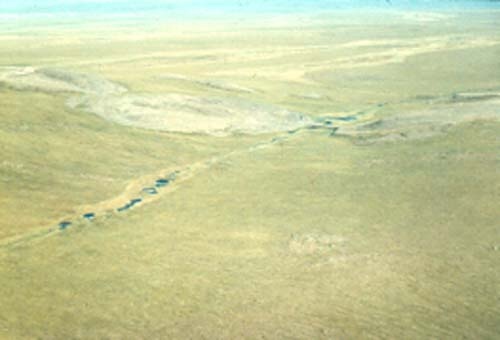Site Map: |
| Imnavait Watershed Sites
Upper Kuparuk Watershed Sites Western Kuparuk Sites Eastern Kuparuk Sites Coastal Plain Sites General Info |

PHOTO: Larry Hinzman, WERC |
||||||||
|
The Imnavait Creek watershed is located on the North Slope of Alaska, at the foothills of the Brooks Range (68o37'N, 149o19'W). Imnavait Creek parallels the Upper Kuparuk basin and enters the Kuparuk River 12 km north of the Upper Kuparuk gauging station. This small watershed at the headwaters of the Kuparuk River has been monitored since 1985. Imnavait creek is a first order stream on the 1:63,360 USGS topographic map. Flows at Imnavait creek persist throughout the summer months, but during the late winter months flow is practically non-existent. The stream is beaded, meaning that the channel connects numerous interspersed small ponds. The ponds formed when massive ground ice melted due to some past thermal disturbance. These ponds are on the order of 2 m deep and a few meters in length and width (Kane et al. 2000).
Imnavait Creek has a H-flume with water level recorder and pressure transducer to aid in flow measurement estimates. A complete meteorological station is located at the Imnavait Basin station. Variables measured at this met station are wind speed, relative humidity and air temperature at three elevations (with the maximum at 10 m). Wind direction, rainfall and soil temperatures are also measured. Incoming and outgoing long and short wave radiation are measured from before snowmelt until freeze-up. The water equivalent of the snowpack is measured late each spring at numerous locations over the basin just before melt begins (Kane et al. 2000).
|
||||||||
|